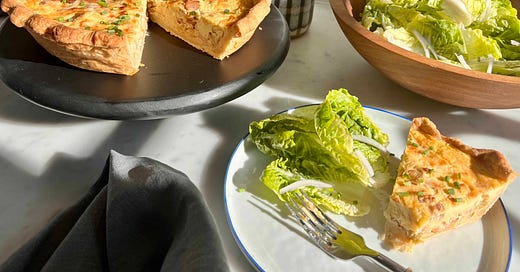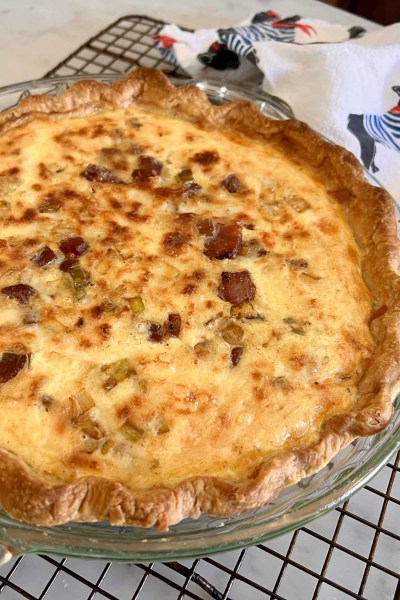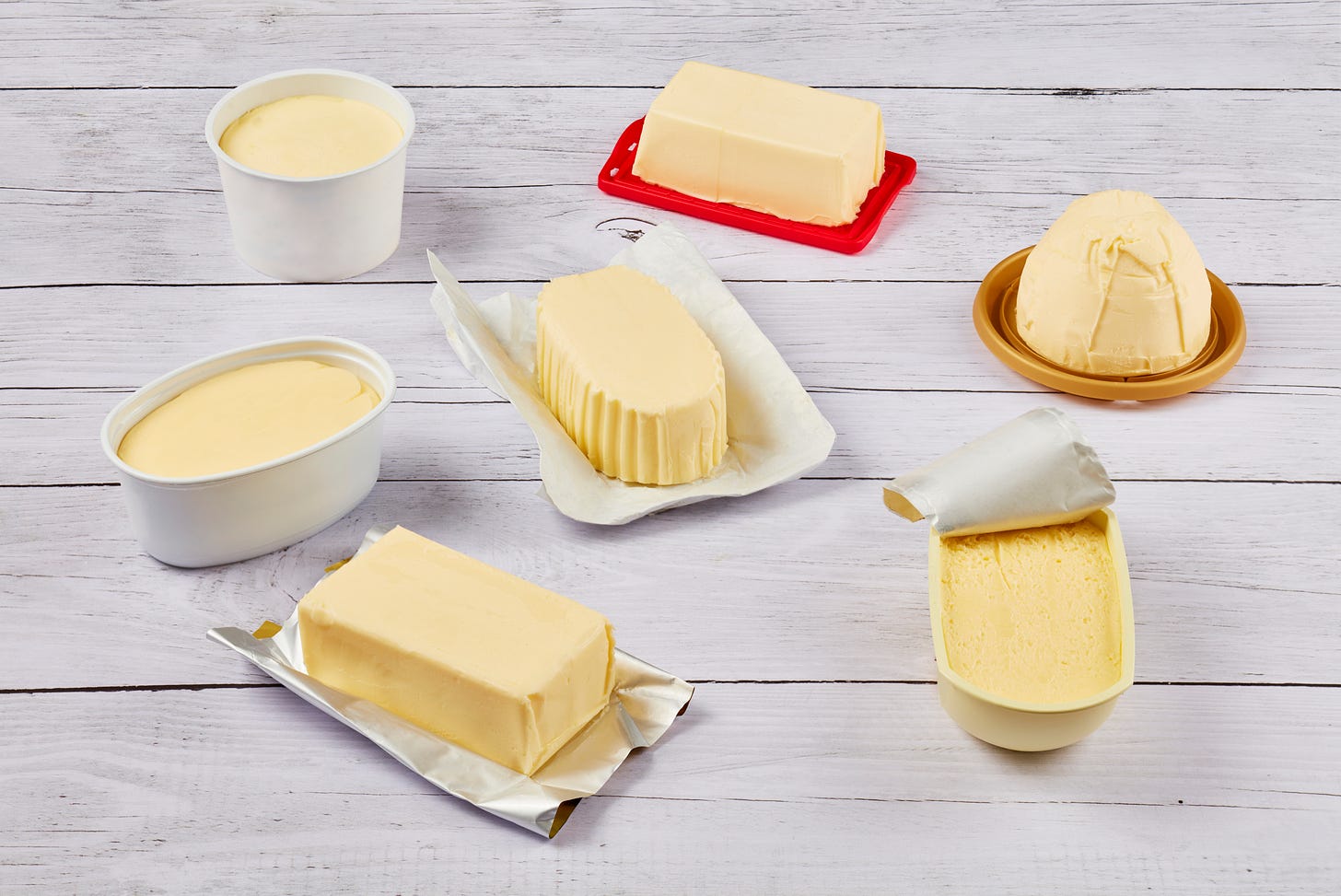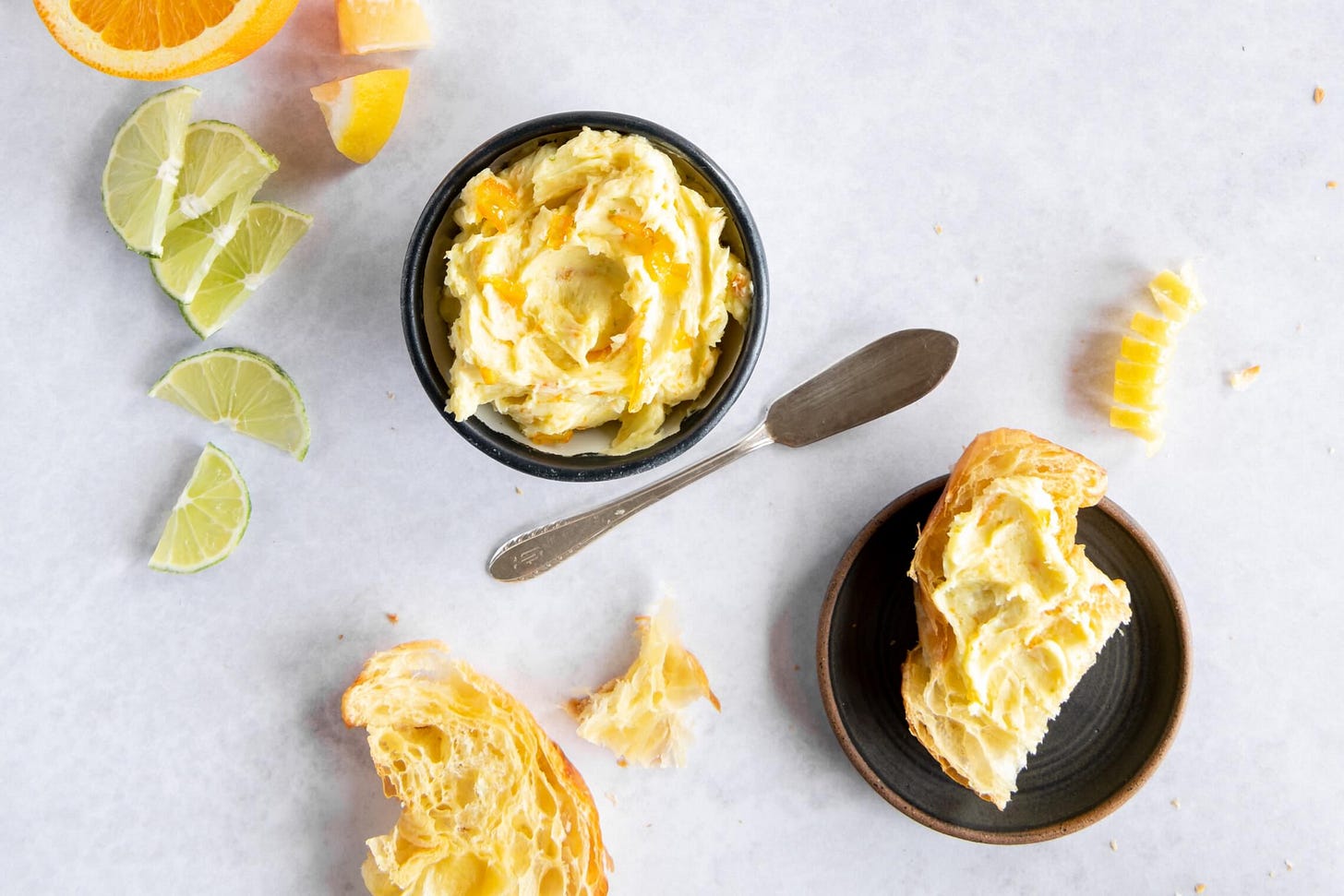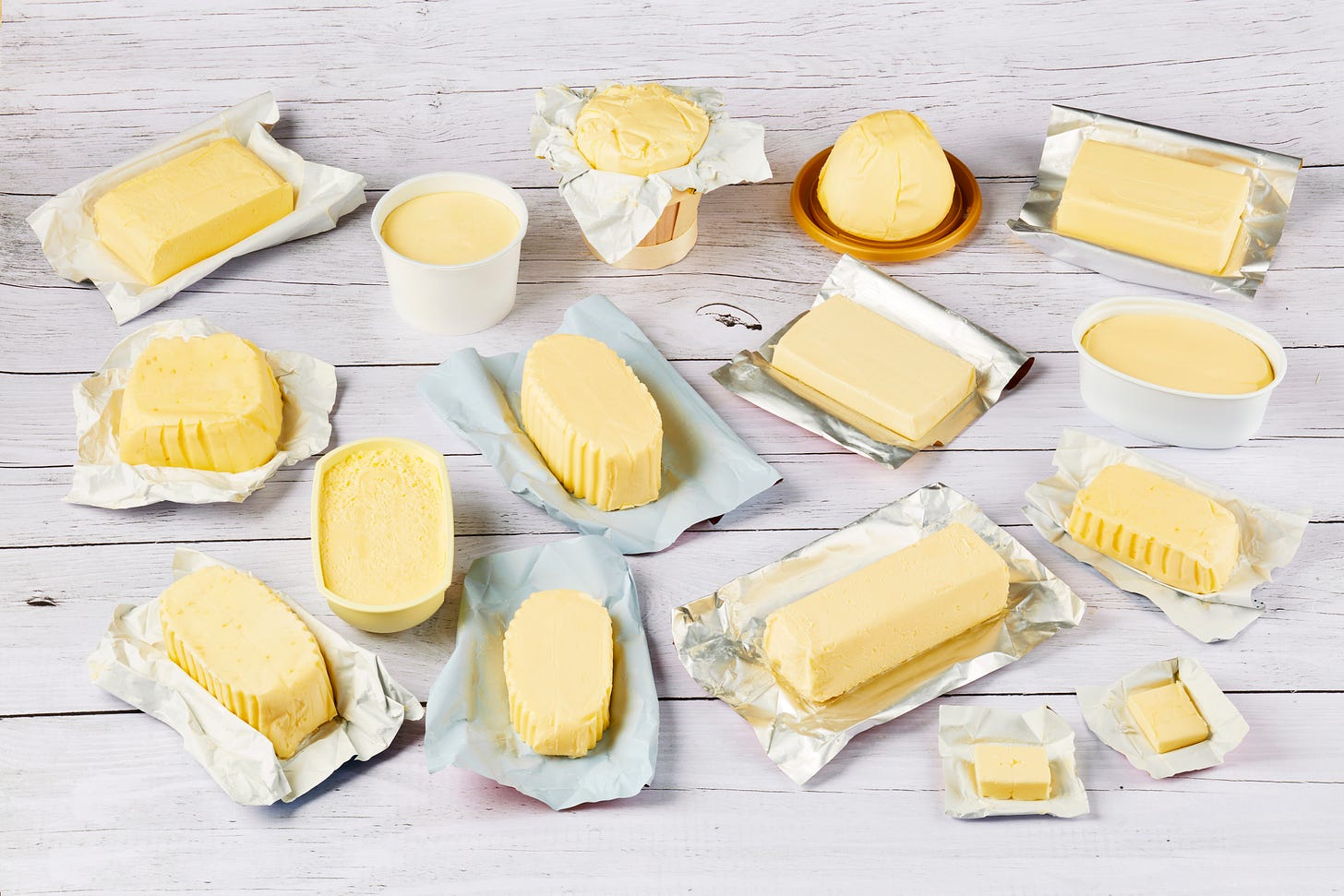This week, we are packed with good stuff, and if you make this week’s recipes, you will be, too! Anthony’s got the Quiche Lorraine recipe to end all Quiche Lorraine recipes. Plus, Elizabeth is buttering us up with a special selection of French butters—are they really better than what we churn out in the States?? Taste for yourself by entering our FRENCH BUTTER GIVEAWAY!
THAT IS SOOOOOO’R QUICHE!
AU: I have always had a minor obsession with quiche. Maybe it’s because it’s basically a brunch pie. Maybe it’s because I thought it was fancy. Maybe it’s because I loved a fast-casual French restaurant called La Madeleine when I was growing up. Of all the quiches, Quiche Lorraine was my favorite. I mean, how can one compete with the combination of sweet onions, smokey bacon, and tons of cheese? Spinach-Mushroom could never.
EK: My Spinach-Mushroom has an inferiority complex! I do love that combo of spinach and mushrooms, but I have to say you are right. Quiche Lorraine is the ticket! One of my favorite things to do in Paris is go into a boulangerie and buy a quiche, which I then eat cold as I meander along the street.
AU: Nowadays I love quiche because it’s an impressive and easy dish to put together for lunch or brunch.
The key to making quiche is preparation. If you save all the steps till the day you want to serve it, you’re going to be annoyed and exhausted by the time it’s ready to eat.
Nobody should be sad around quiche. It’s a rule.
I prefer to make the pie dough a few days ahead of time (or take some from the freezer). If I don’t have any homemade pie dough on hand, I just use a store-bought dough. Sometimes it’s the roll-and-bake kind, and sometimes it’s the kind that’s already pressed into its own pan. Both make for an excellent quiche.
The other make-ahead step you can take is sautéing the leeks and bacon ahead of time, so the day you want to serve the quiche, you just need to crack some eggs, assemble it, and bake it.
AU: I’ve made lots of different versions of Quiche Lorraine (which hails from the France/German border of Lothringen—now known as Lorraine). My favorite versions always use leeks instead of onions, and have plenty of Gruyére cheese. But then again, quiche is kind of like pizza. Even bad quiche is good quiche, ya know?
You can kind of break the filling into two parts: the bacon-leek-garlic-cheese mixture, and the custard. First add your chopped bacon into a cold pan and turn it on to MEDIUM. Do not be tempted to raise the heat. Let the fat slowly render out and crisp the bacon. Remove the bacon pieces with a slotted spoon, and pour off some of the bacon fat. Sauté the leeks and garlic in the reserved bacon fat. If your bacon left a lot of fond/drippings in the pan, you may need to deglaze the pan while your leeks cook. I just add a splash of water here and there, as needed, but you could also add white wine. Just make sure all the liquid cooks out completely before letting the whole mixture cool to room temperature.
This part can be done a day or two in advance, btw. Once it’s cool, sprinkle the mixture into your baked pie shell along with grated Gruyére cheese.
AU: Then turn your attention to the custard filling. Eggs, half-n-half, Dijon mustard, Cayenne pepper, nutmeg and some parmesan make it a deeply savory and silky base. Whisk it all together and gently pour it over the leek-bacon-garlic-gruyére mixture in the pie shell.
Depending on the size of your pie shell, you may have some custard mixture leftover. Make good use of it by buttering a ramekin or muffin tins and making little custardy frittatas, OR using it to make a savory French Toast or Mini Strata!
Pop the quiche into the oven and bake till it’s GBD! You can sprinkle it with some snipped chives or minced parsley before serving, if you’d like. I tend to like the mild oniony flavor of chives with this quiche. And I always enjoy a nice crisp glass of white wine with a slice of quiche and a zippy salad.
EK: Your description has me craving and salivating! I am off to the grocery store to buy leeks, Gruyére and bacon!
KITCHEN ESSENTIALS: FRENCH BUTTER
EK: Butter is one of my favorite Kitchen Essentials, and there is nothing like French Butter. In my book, it’s the OG flavor gal!
AU: I couldn’t agree more! Want to know why restaurant food always tastes so much better than what you cook at home? Butter. And why is European-style butter so much creamier and butterier than grocery store brands in the U.S.?
EK: Anyone who knows me knows that I am a Francophile and when I go to France, the first thing that I do is go to the corner store and buy butter to go with my fresh baguette. I buy a few other things as well, many in the dairy family including yogurt and cheese. There is nothing like biting into a crisp, yet chewy fresh baguette slathered with creamy tangy French butter and a sprinkle of coarse Fleur de Sel. When I’m feeling fancy, I add a couple of thin slices of French ham and nestle it between the bread and butter!
AU: YASSSSS MY BUTTER KWEEN!! Sounds like pure unadulterated heaven.
EK: Why is that simple combination so damn good?! My answer: the French butter. The fresh baguette and the ham also contribute, but French butter is richer and more flavorful than American butter. Don’t take my word for it, it’s the #1 chef choice!
There are 2 key differences in the butter from France and American butter:
French butter has a higher percentage of butterfat.
The cream used in French butter is cultured.
French butter is also made from the milk of grass-fed cows, which produces a more savory, nutty-tasting butter than non-grass-fed cows.
In the USA, butter has to be a minimum of 80% fat, in France, it has to be a minimum of 82% fat and many of the better butters have an even higher percentage.
Besides being higher in fat, French butter is also cultured. Think about yogurt, creme fraîche, and sour cream. Their flavor is slightly tangy because regular cream and milk is fermented to bring out the creaminess, depth and dimension which translates to a more pronounced flavor. In the case of butter, the butter is more buttery…
EK: The higher butterfat also makes it easier to work with as it’s more malleable. And, would be terrific in Anthony’s foolproof pie dough for this week’s Quiche Lorraine.
AU: I can’t wait to share my pie dough recipe (coming soon!). I always like using a higher-quality/higher-butterfat butter when I’m baking. Is there any difference in the French butter I can buy here in the USA versus across the pond??
EK: No. You can buy French butter in the USA, and because of that, it is one of my kitchen essentials. Which butter should you buy? All of them of course! Buy a variety and taste them like you would taste cheese and figure out your favorite one based on your individual preference.
AU: When Josh and I had one of our very first fancy meals together, it was at this incredible fairytale of a restaurant in Portsmouth, NH called Arrows. The bread service came out with THREE DIFFERENT BUTTERS—a grass-fed cow’s butter, a goat’s milk butter, etc. It was SO eye opening to taste the differences between the different butters next to each other. Who knew they could all taste so wildly different?
EK: To drill it down: there are four different types of French Butter available in the USA:
Unsalted: Beurré doux - No salt added butter. It is more perishable and must be used quickly, since there is no salt to preserve it.
Salted: Beurré sales - Commonly used in savory dishes, you can use in baking, but eliminate any other salt in the recipe. It lasts longer as salt is a preservative.
Sea Salt Crystals: Buerre Avec Cristaux or aux cristaux de sel de mer - Small salt crystals are mixed in throughout this butter. You can literally see the salt crystals when you cut a slice of this butter off the brick. They give a nice crunch to the rich and delicious butter. This is a table butter meant for spreading on fresh bread or to use in place of a compound butter on top a hot grilled steak or piece of fish.
Baratte: Beurré de baratte (Creamy churned butter) - Baratte means “churn.” The cream has been allowed to mature longer than traditional French butter so it has a richer flavor profile. And, it is produced using a traditional mixing and kneading style.
EK: And one more thing… like wine and cheese, if the butter has AOP after the name, it is Beurré AOP, a protected butter designation. Appellation d’ Origine Protegee (AOP) is awarded only to products that are produced, processed and refined exclusively in their region of origin.
AOP Butter comes from three regions in France that are known for their butter. These are Isigny butter from Normandy, Beurré de Bresse from Rhône-Alpes, and Charentes-Poitou butter from Nouvelle Aquitaine. French Butter must be produced here to have the term “AOP” after the name.
Visit TasteEurope.com for retail and online locations that sell French butter.
WANT TO WIN SOME INCREDIBLE FRENCH BUTTER??Taste Europe, Butter of France Giveaway
If you’d like to host your own butter tasting at home, we've teamed up with Taste Europe, Butter of France to send one lucky winner the ultimate selection of French Butter right to your door!!
➡️ ENTER by clicking the button below. It’s that easy!
**You must be a subscriber of Whats 4 Dinner? to enter; Entry period closes at 11:59 p.m. ET on Tuesday April 11, 2023. Continental United States only; Void where prohibited.**
THE GOODS: BONUS RECIPES FOR PAID SUBSCRIBERS
Elizabeth’s Classic Pimento Cheese
The Masters Golf Tournament in Augusta, Georgia, begins today. Besides the golf and Tiger Woods, pimento cheese is a big draw at the tournament. It is the “official” Masters sandwich because it is the most popular of the sandwiches offered. I’ve been making this no-fail pimento cheese for decades. It definitely deserves its own green jacket!
Keep reading with a 7-day free trial
Subscribe to "What's 4 Dinner?" to keep reading this post and get 7 days of free access to the full post archives.

